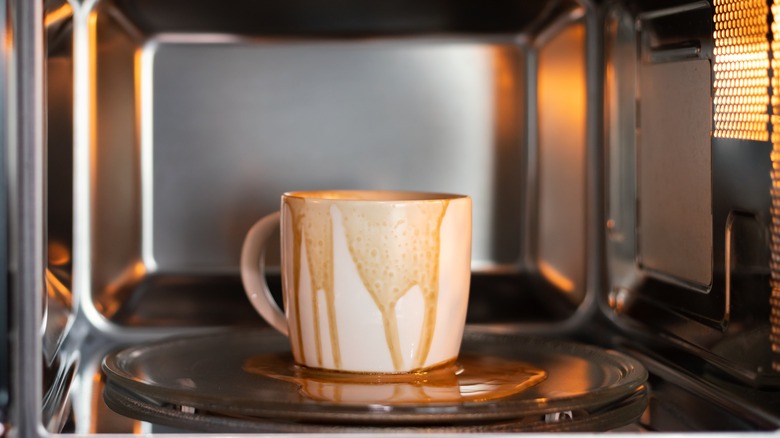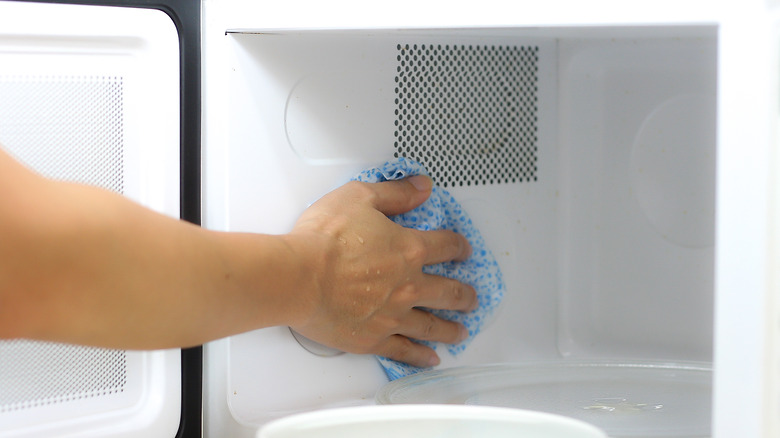The Dos And Don'ts Of Cleaning A Microwave
We tend to put cleaning off. We shouldn't, especially in the kitchen where cleanliness is key to a safe and delicious meal, but it happens. Some nights you choose not to wipe off the starchy pasta water from the stovetop, you promise yourself you'll clean the spilled margarita mix off the floor tomorrow, and you completely ignore the lasagna that exploded in the microwave last Friday. But keeping a dirty kitchen can put you at risk. According to NI Direct, messy kitchens increase your chance of food poisoning. Additionally, leaving food particles out can attract pests and be a fire hazard. A dirty kitchen is a sign of trouble to come, and the bigger the mess, the harder it will be to clean — so, cleaning the kitchen is something you don't want to put off, but you do want to do it right.
So, if you've been avoiding doing a deep clean of your kitchen, pick up your scrubbers, put on your rubber gloves, and get to work. But be warned, one of the most difficult things to clean in your kitchen might be the microwave. It collects stains and fries them to its walls, and easily collects grease (which then becomes a fire hazard).
Getting the microwave spotless
For any good clean kitchen, Food & Wine Magazine recommends keeping scouring pads, a deep clean brush set, a scrubber, and of course, sponges and towels on hand at all times. You should have a cabinet or a part of the pantry to keep all your cleaning supplies easily accessible and ready to go. It is also important to make sure your cleaning utensils are clean themselves, or else you're just spreading more germs around your kitchen and adding to a neverending cycle of uncleanliness.
The first thing you must do when cleaning out your microwave is scrub off any old and crusty stains using warm water and dish soap (via United States Department of Agriculture). One thing you don't want to do with this step is to use any harsh tools or cleaners on your microwave so as not to damage it. This kitchen appliance is not as tough as your stovetop or oven, so be gentle.
For particularly gnarly stains, or some truly terrible smells emanating from your microwave, you do want to use baking soda. Baking soda is probably one of the best ways to dissolve dirt and tough to remove oils and grease lining your microwave (via Homes & Gardens). It will also help to remove any bad odors. It is non-toxic and food safe, making it a great choice in natural cleaners. After you've scrubbed and washed away all the gunk from the microwave, you do want to wipe it dry with a towel because you don't want to use it when it's wet or caked in baking soda.

